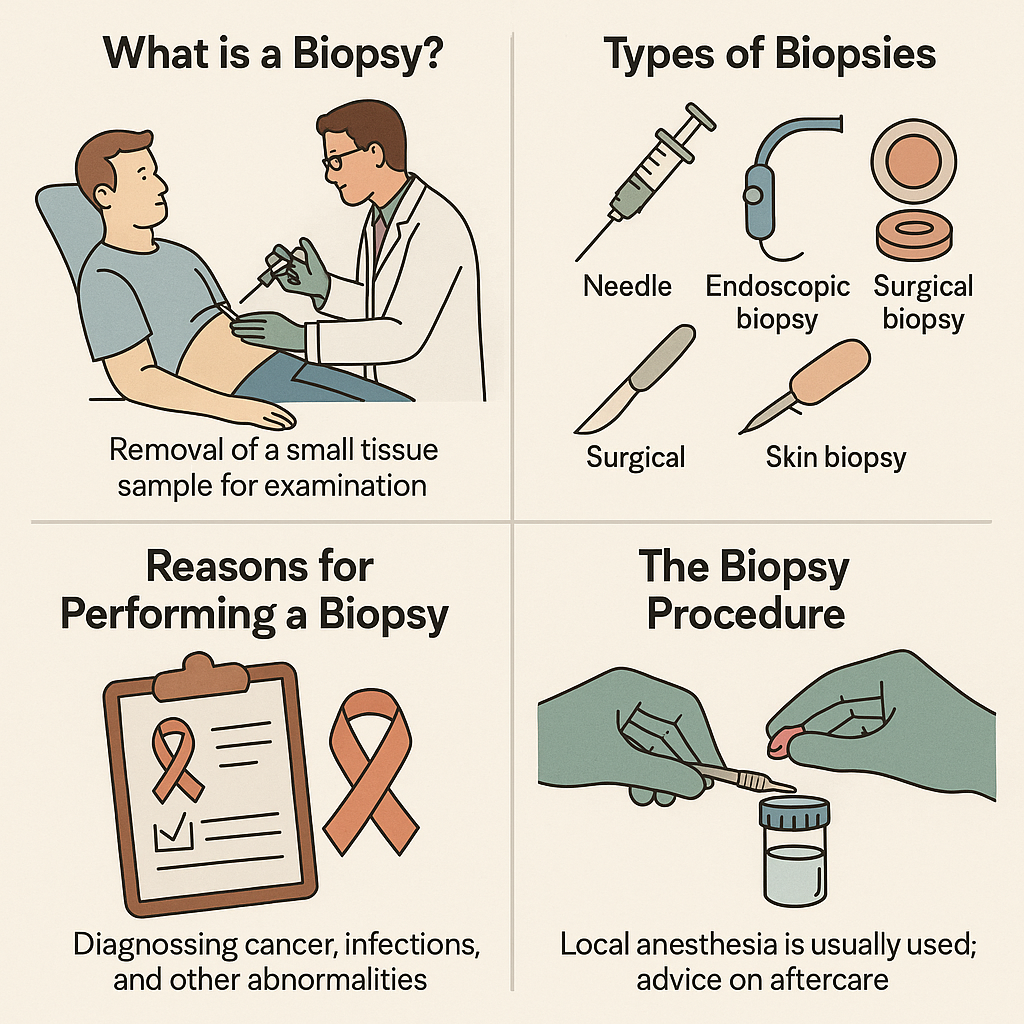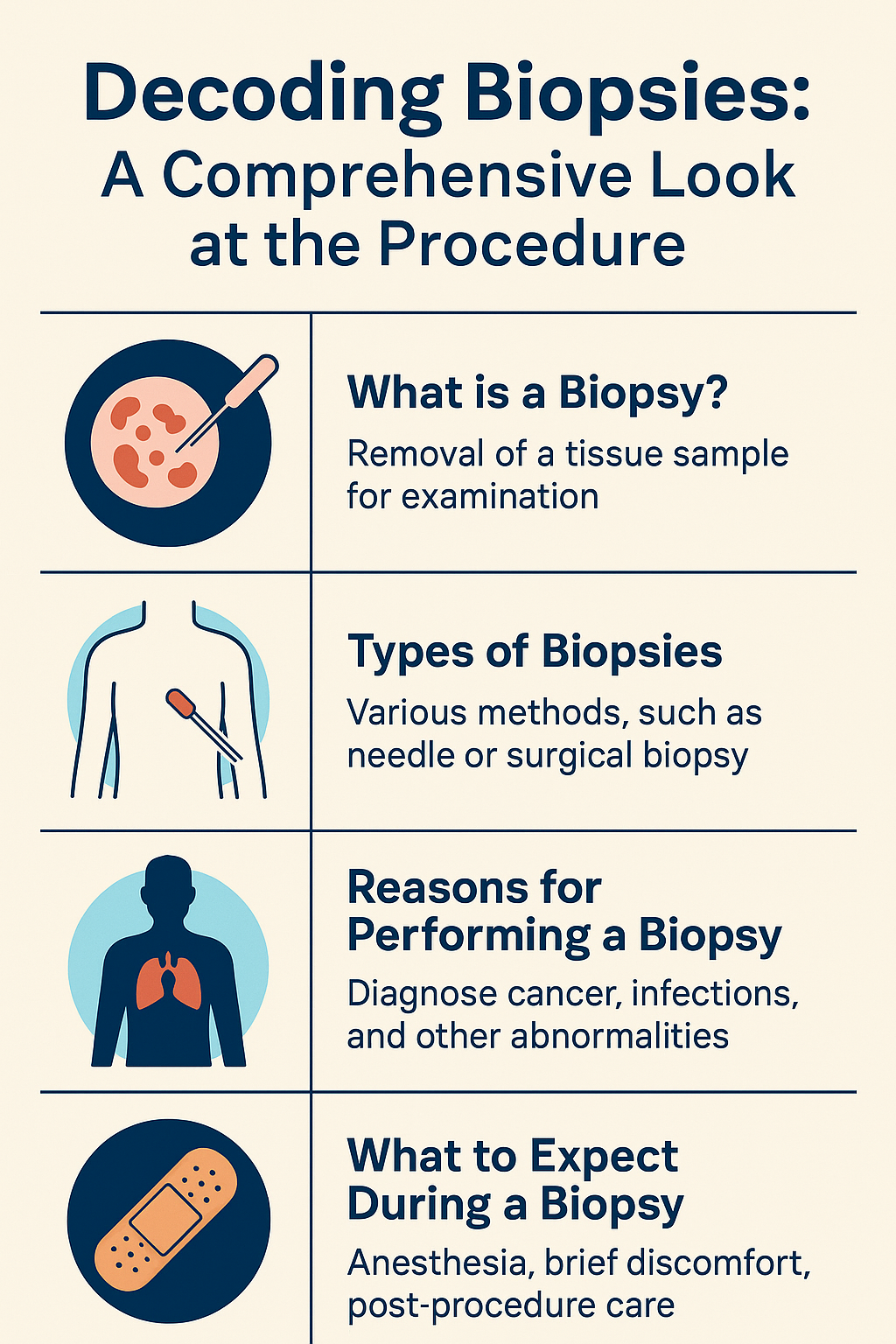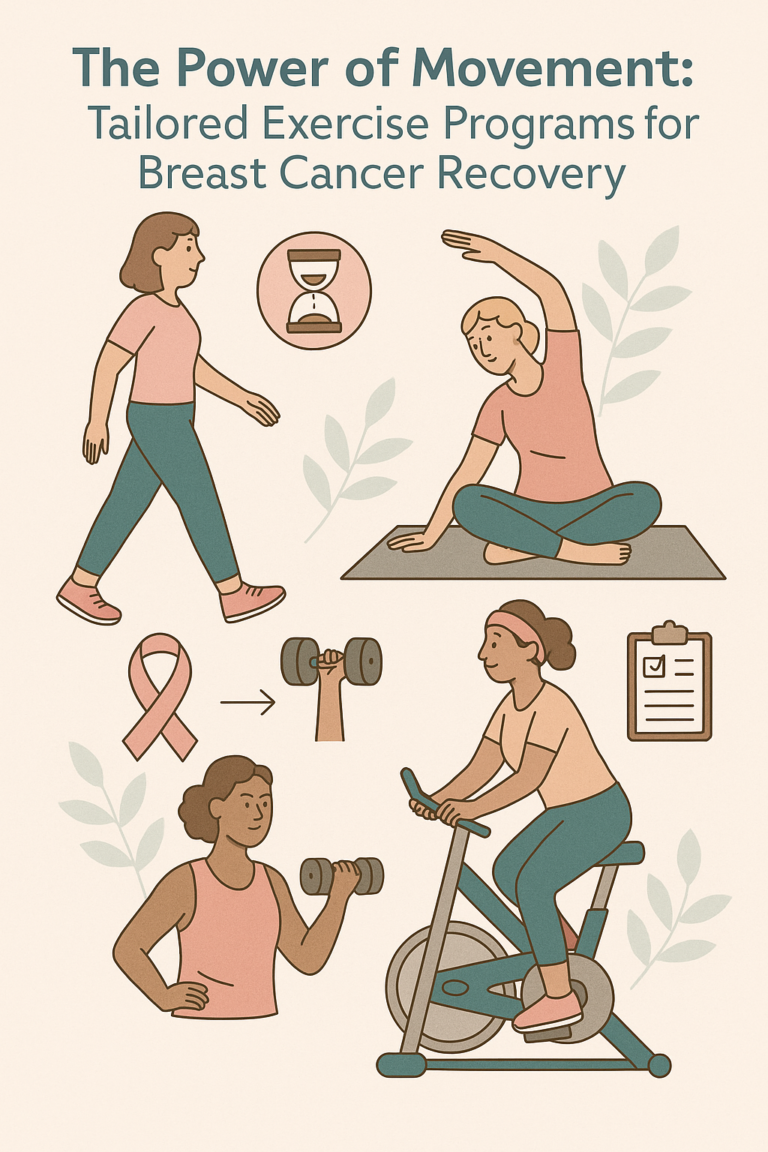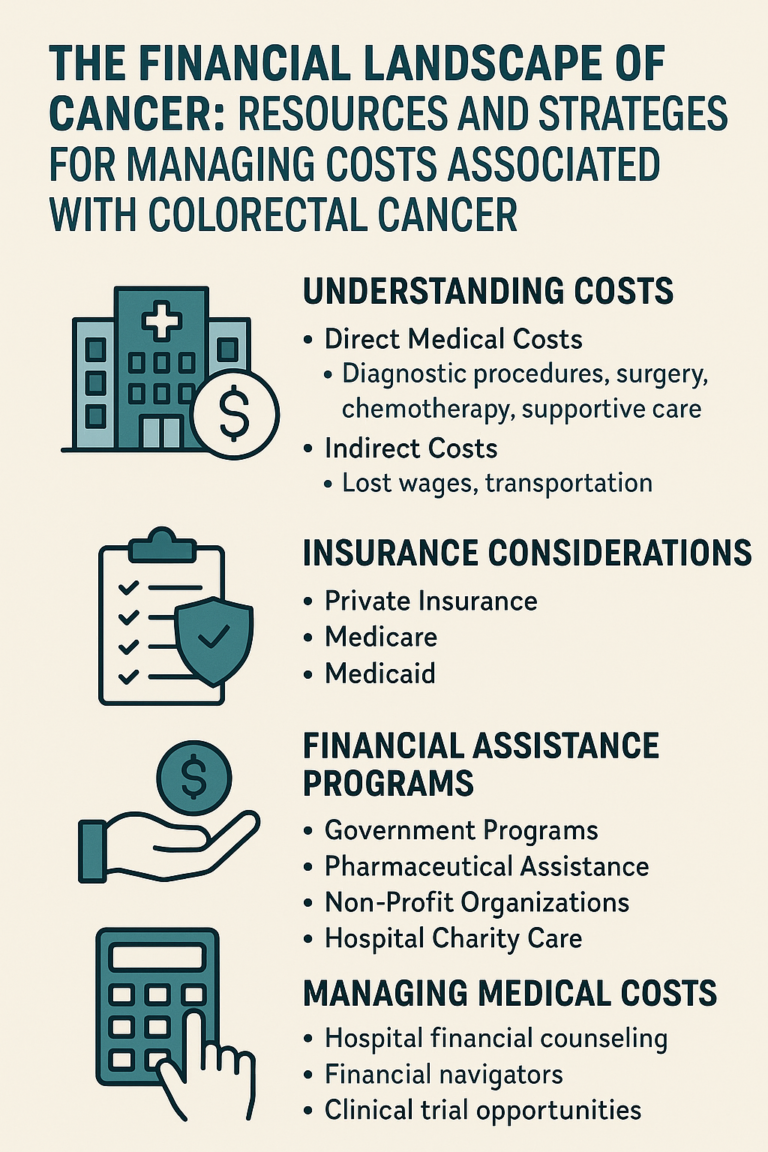Book Appointment Now

Decoding Biopsies: A Comprehensive Look at the Procedure
Introduction
Whether you’re a patient scheduled for a biopsy or someone curious about medical procedures, understanding the process of biopsies can be both enlightening and reassuring. But what exactly happens during a biopsy, and why is it so crucial?
Have you ever wondered what secrets a tiny piece of tissue can reveal about your health?
Key Takeaways
- Discover the purpose and significance of biopsies in medical diagnostics
- Learn about the various types of biopsies and their specific applications
- Understand the reasons why doctors perform biopsies and the insights they provide
- Gain clarity on what to expect during and after a biopsy procedure
- Hear real-life stories from patients who’ve undergone biopsies

What is a Biopsy?
A biopsy, in its essence, is a medical procedure where doctors remove a small sample of tissue from the body for detailed examination. It’s like a tiny window into the inner workings of your body, offering vital clues about your health. This procedure plays a crucial role in diagnosing diseases, especially when it comes to identifying cancers. By analyzing this tissue sample under a microscope, pathologists can spot abnormal cells and tissue that may indicate a disease or abnormal condition.
Doctors often rely on biopsies to determine the nature and extent of medical conditions. For instance, if a doctor finds a suspicious lump or mass during an examination, a biopsy can help confirm whether it’s benign or malignant. This distinction is crucial for deciding the best course of treatment. Medical professionals regard biopsies as an indispensable tool for accurate diagnosis, ensuring that patients receive the most effective care tailored to their specific needs.
The role of the biopsy stretches beyond just identifying cancer. It helps in detecting infections, inflammation and other abnormalities that might be lurking within the body. For example, if you’re experiencing unexplained symptoms, a biopsy might be the key to understanding what’s wrong and how to address it. This procedure is a cornerstone of modern medicine, shining a light on the often-hidden aspects of our health.
Biopsies are not just about identifying problems; they are also about providing peace of mind. Sometimes, the results will show that everything is normal, offering reassurance and relief. In other cases, they point towards a diagnosis that requires action, allowing you and your healthcare team to make informed decisions about your health journey.
Types of Biopsies
The world of biopsies is diverse, with various types tailored to specific needs and situations. One of the most common forms is the needle biopsy, which involves extracting a small tissue sample using a thin needle. This type is minimally invasive and often guided by imaging techniques to ensure accuracy. Within this category, you’ll find the fine needle aspiration and the core needle biopsy, each suited to different diagnostic needs.
For situations where doctors require a closer look, an endoscopic biopsy may be performed during an endoscopy procedure. This involves using a thin, flexible tube with a camera to reach areas inside the body and obtain tissue samples. It’s particularly useful for examining the digestive tract, lungs, and other internal organs.
When larger samples are necessary, a surgical biopsy might be on the cards. This involves removing a portion or the entire mass or lesion through surgery. There are also excisional and incisional biopsies—the former removes the entire lesion, while the latter takes a small part of it. Surgical biopsies are typically reserved for situations where other methods aren’t feasible or when a more comprehensive sample is needed.
For skin-related conditions, a skin biopsy can be instrumental. Dermatologists use this technique to diagnose skin diseases, including melanoma and other skin cancers. Various methods, such as the punch biopsy, allow precise removal of skin samples for analysis. In addition, image-guided biopsies utilize imaging technologies like ultrasound or CT scans to target specific areas, ensuring that the sample is taken from the right location, enhancing the diagnostic process.

Reasons for Performing a Biopsy
Physicians have several reasons for ordering a biopsy, one of the most significant being the confirmation or ruling out of cancer. This procedure provides essential information about the characteristics of a tumor, such as its type and aggressiveness. Knowing whether a tumor is benign or malignant can dramatically influence the treatment approach, guiding decisions on surgery, chemotherapy, radiation, or a combination of therapies.
Biopsies also play a crucial role in assessing the severity of infections. For instance, if there’s an unusual or persistent infection that doesn’t respond to standard treatments, a biopsy can help identify the causative agent, allowing for a targeted treatment plan. This is particularly important in cases where antibiotic resistance is a concern or when dealing with rare pathogens.
Evaluating unexplained tissue growth or inflammation is another critical aspect of biopsy use. These procedures help doctors understand the underlying causes of such conditions, whether it’s an autoimmune disorder, a chronic infection, or something else entirely. By pinpointing the root issue, physicians can devise more effective treatment strategies, improving patient outcomes.
Medical teams also rely on biopsies to make informed treatment decisions. The insights gained from biopsy results guide the choice of therapies, ensuring they are tailored to the patient’s specific condition. Whether it’s a question of starting a new medication or considering a surgical intervention, biopsies provide the data doctors need to proceed with confidence.
The Biopsy Procedure
As you prepare for a biopsy, you can expect your doctor to explain the procedure in detail and answer any questions you might have. This is an opportunity to understand what will happen and voice any concerns. Whether it’s your first biopsy or a repeat procedure, being well-informed can ease anxieties and help you feel more in control.
Before the procedure begins, patients typically receive local or general anesthesia to minimize discomfort. The type of anesthesia depends on the biopsy method and the area being examined. For instance, a simple needle biopsy might only require a local anesthetic, while a more invasive surgical biopsy could necessitate general anesthesia.
During the procedure, medical professionals use specialized instruments to obtain the necessary tissue samples. The process is usually quick, often taking less than an hour, although this can vary based on the type of biopsy being performed. Some procedures, like those guided by imaging tests such as ultrasound, might require additional time to ensure precision.
After the biopsy, patients receive guidance on post-procedure care to promote proper healing. This might include instructions on keeping the biopsy site clean, managing any discomfort with over-the-counter pain relievers, and recognizing signs of potential complications. Following these recommendations helps you recover smoothly and reduces the risk of infection or other issues.
What to Expect During a Biopsy
During a biopsy, you might experience some pressure or mild discomfort, depending on the procedure type. For example, a needle biopsy might feel like a small pinch, while a surgical biopsy could involve more significant sensations due to the nature of the procedure. Rest assured, your medical team will take every step to minimize any discomfort and keep you comfortable.
Doctors closely monitor vital signs throughout the procedure to ensure patient safety. This includes checking your heart rate, blood pressure, and oxygen levels. Such monitoring helps quickly identify any issues, allowing for prompt intervention if necessary. Your safety is a top priority, and the team is there to support you every step of the way.
Maintaining a calm and reassuring environment is another focus for medical staff during a biopsy. By creating a soothing atmosphere, they aim to ease any anxiety you might feel about the procedure. Whether it’s through gentle conversation, soothing music, or simply being present, the team works diligently to help you stay relaxed.
Most patients find they can resume normal activities shortly after a biopsy, especially if it’s a minimally invasive procedure. However, it’s important to follow your doctor’s advice regarding activity levels and post-procedure care. If you’ve had a more extensive biopsy, such as a surgical one, you might need to take it easy for a few days to allow your body to heal.
Medical teams provide clear instructions for pain management if needed. This might include over-the-counter medications or specific prescriptions if more substantial pain relief is necessary. Knowing what to expect and how to manage any discomfort can make the recovery process much smoother, enabling you to focus on getting back to your routine.
Understanding Biopsy Results
Once the biopsy is complete, pathologists get to work analyzing the sample and preparing a detailed report. These specialists examine the tissue under a microscope, looking for any abnormalities, such as unusual cell structures or signs of disease. Their findings form the basis of the biopsy results, providing crucial information for further medical decisions.
Test results typically become available within a few days to a week, depending on the complexity of the analysis. During this time, it’s normal to feel a mix of anticipation and anxiety as you await the outcome. Keeping communication open with your healthcare provider can help ease any concerns and provide reassurance that everything is on track.
When your doctor receives the biopsy results, they will discuss the findings with you in detail, explaining their implications. Whether the results confirm a diagnosis or rule out a suspected condition, understanding what they mean is essential for making informed decisions about your health. This conversation is a chance to ask questions and clarify any uncertainties you might have.
Depending on the biopsy results, you might need follow-up tests or treatments. If the biopsy confirms a diagnosis, your doctor will outline the next steps, which could include additional testing, treatment options, or referrals to specialists. If the results are inconclusive, further investigation might be necessary to reach a definitive diagnosis.
Open communication with your healthcare providers is key to fully understanding the biopsy results and their implications. By engaging in honest, two-way conversations, you can gain valuable insights into your health and take proactive steps toward managing it effectively. Remember, your healthcare team is there to support you, providing guidance and expertise every step of the way.
Real-Life Patient Stories
Hearing from patients who have undergone biopsies can offer valuable insights and reassurance. Their experiences shed light on the emotional journey of facing a biopsy, providing a personal perspective that statistics and clinical explanations often lack. Whether it’s a story of resilience, relief, or renewed hope, these narratives can resonate deeply with those preparing for their own procedures.
For many, sharing their biopsy experiences is a way to help others by providing a sense of connection and understanding. Hearing about someone else’s journey through a breast cancer diagnosis or the relief of ruling out cervical cancer can be incredibly powerful. These stories remind us that we’re not alone in our health challenges and that others have navigated similar paths.
Testimonials often highlight the importance of understanding the procedure’s purpose and the peace of mind it can bring. For some patients, the biopsy confirmed a diagnosis that led to life-saving treatment. For others, it provided reassurance that their symptoms were benign, allowing them to move forward with confidence. In both cases, knowledge proved to be a powerful ally against fear and uncertainty.
Personal accounts offer encouragement and reassurance to new patients, showing that while biopsies can be intimidating, they are manageable and often less daunting than anticipated. By hearing about others’ experiences, you can gain a better understanding of what to expect and feel more prepared to face the procedure with confidence.
Listening to real-life stories can transform the biopsy process from a clinical procedure into a shared human experience. It’s a reminder that these medical tests are part of a broader narrative of health and healing, connecting us to a community of people who understand and empathize with our struggles and triumphs.
Conclusion
Biopsies play a crucial role in diagnosing and treating a wide range of medical conditions, from cancer to chronic infections. Understanding this procedure can significantly reduce anxiety, empowering you to approach it with confidence. It’s essential to feel comfortable asking questions and expressing any concerns you might have, fostering a collaborative relationship with your healthcare team.
Collaboration between patients and healthcare providers ensures the best possible care, aligning medical expertise with your personal needs and preferences. By staying informed about biopsies and their role in medical diagnostics, you enhance your confidence and peace of mind, making informed decisions about your health journey. As you navigate the world of biopsies, remember that you’re not alone. Many have walked this path before and emerged stronger and more informed about their health. So, as you reflect on what you’ve learned, consider this: How can understanding biopsies change the way you approach your health and wellness journey?



